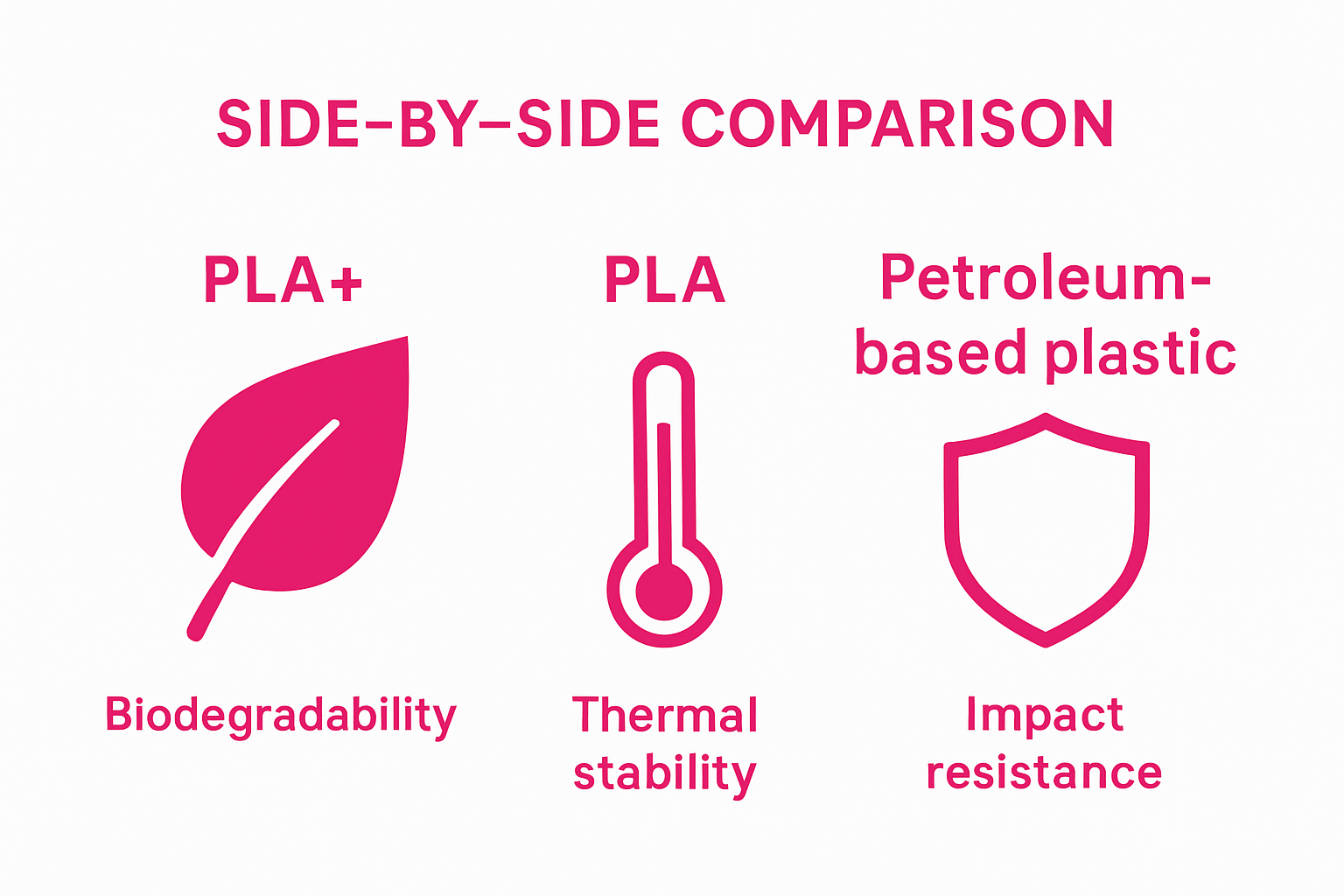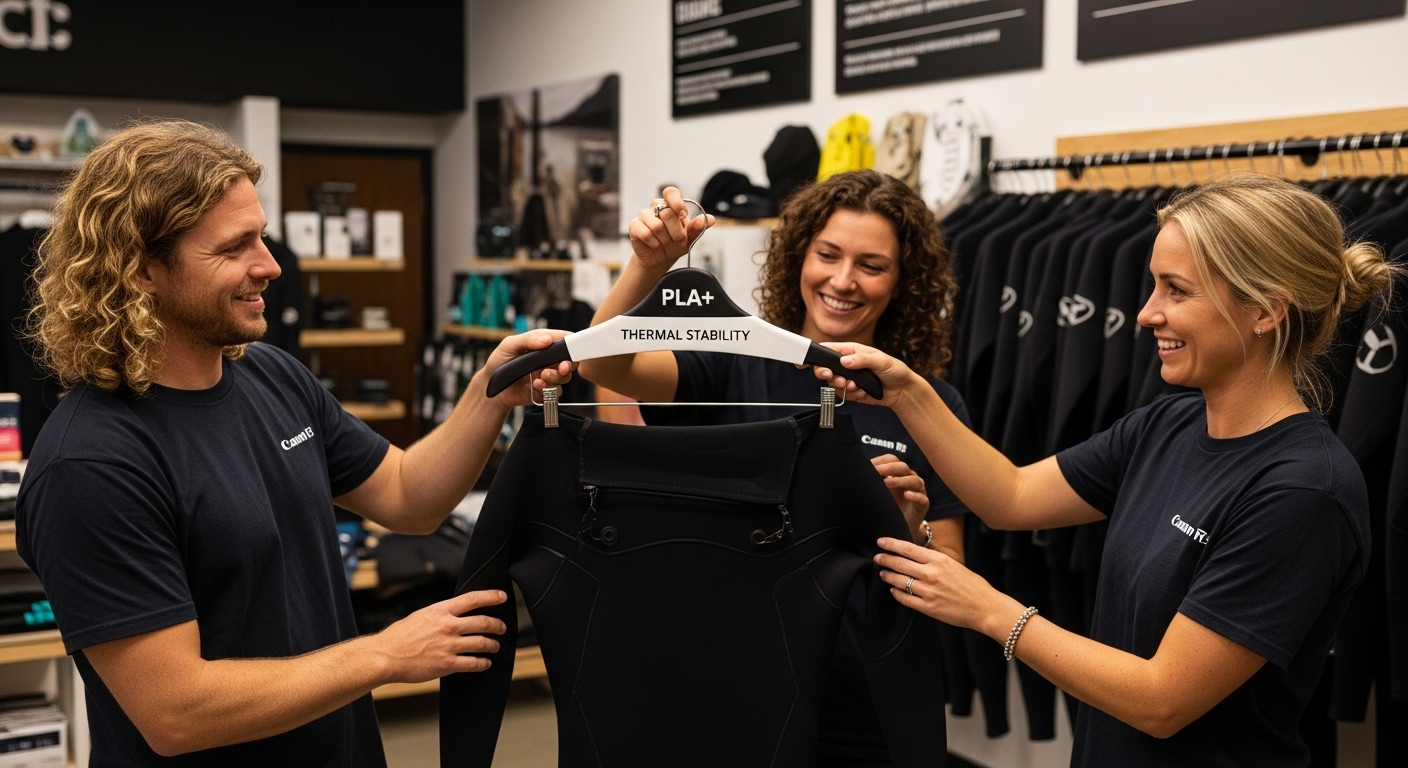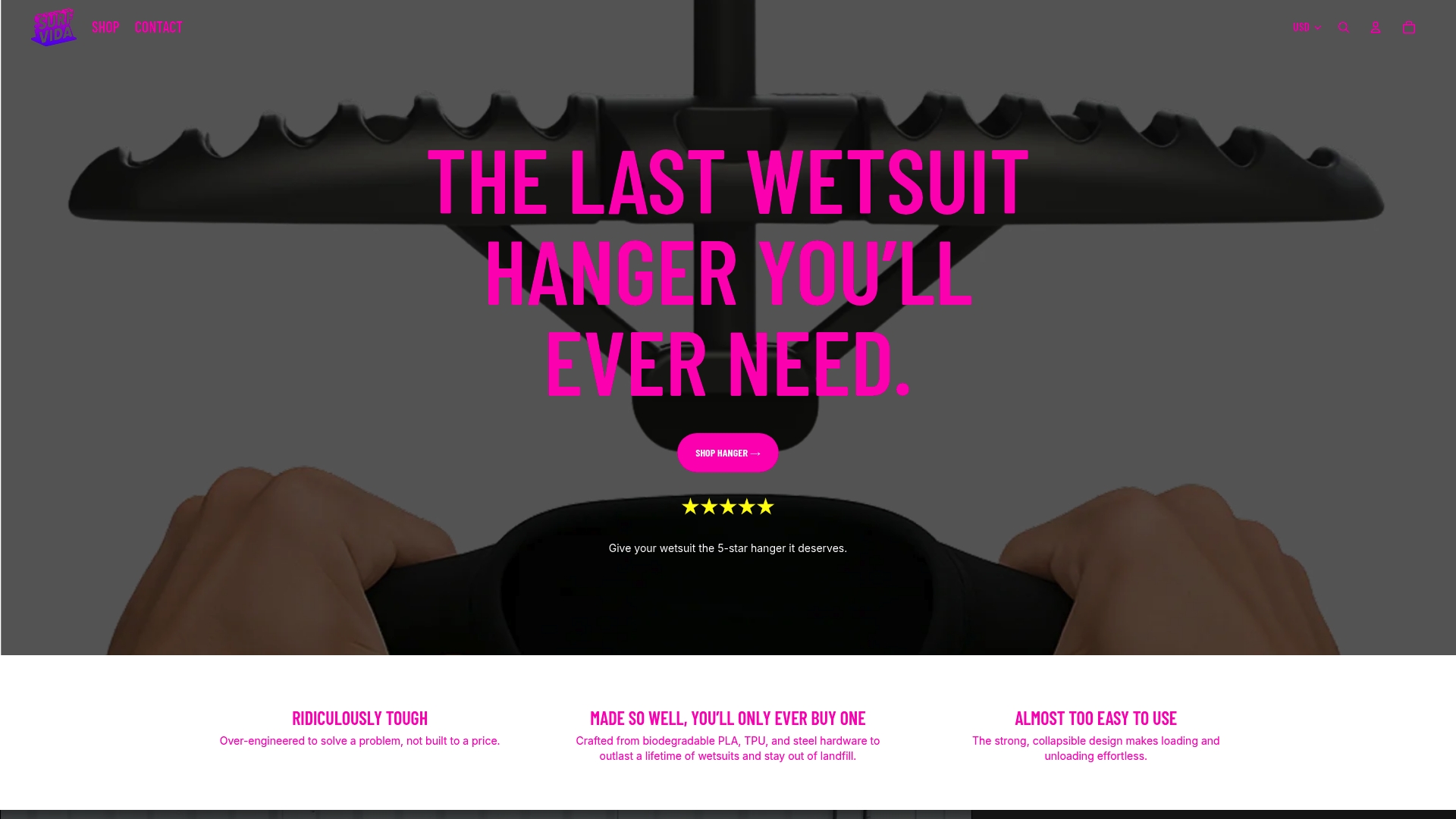PLA+ is making serious waves in watersports gear and it is not just another plastic upgrade. PLA+ can be up to 60 percent stronger and far more moisture resistant than standard PLA, while still being fully biodegradable. Most people might assume that eco-friendly materials always fall short when toughness is required. The surprise is that PLA+ actually outperforms many petroleum-based plastics on durability and performance—changing what athletes expect from their gear.
Table of Contents
- What Is Pla+ And Its Role In Watersports Gear?
- Why Pla+ Matters For Performance And Sustainability
- How Pla+ Improves Your Watersports Experience
- Key Concepts Of Pla+ Material In Wetsuits And Gear
Quick Summary
| Takeaway | Explanation |
|---|---|
| PLA+ enhances watersports gear performance | This advanced material offers superior mechanical properties, making it ideal for marine environments and equipment longevity. |
| PLA+ offers environmental sustainability | As a biodegradable thermoplastic made from renewable resources, PLA+ reduces ecological impact compared to petroleum-based plastics. |
| Excellent durability under marine conditions | PLA+ showcases remarkable resistance to moisture, UV rays, and mechanical stress, ensuring longer-lasting equipment. |
| 3D printability fosters innovative designs | The material’s versatility allows manufacturers to create complex, ergonomic shapes tailored for optimal performance and comfort. |
| PLA+ supports eco-friendly equipment choices | Athletes can select high-performance gear that aligns with environmental conservation efforts, promoting sustainable watersports activities. |
What is PLA+ and Its Role in Watersports Gear?
PLA+ represents an advanced biodegradable thermoplastic material specifically engineered to enhance performance in demanding environments like watersports. Unlike traditional plastics, PLA+ offers unique characteristics that make it particularly suitable for manufacturing specialized gear and equipment.
Material Composition and Properties
PLA+ is a modified version of polylactic acid (PLA), a polymer derived from renewable resources like corn starch or sugarcane. The “+” designation indicates an improved formulation with enhanced mechanical properties. According to TWI Global, this material provides several key advantages:

- Superior thermal stability
- Increased impact resistance
- Enhanced flexibility compared to standard PLA
- Environmentally friendly biodegradability
For watersports enthusiasts, these properties translate into gear that can withstand challenging marine conditions while maintaining structural integrity and environmental responsibility.
Performance in Watersports Applications
In the context of watersports equipment, PLA+ demonstrates remarkable versatility. The material’s inherent characteristics make it an excellent choice for manufacturing items like wetsuit hangers, protective gear, and specialized accessories. Research from the University of Basel highlights that while PLA exhibits some temperature sensitivity, strategic modifications can significantly improve its performance.
When used in watersports gear manufacturing, PLA+ offers critical advantages such as lightweight construction, resistance to saltwater degradation, and the ability to be precisely 3D printed into complex shapes. These qualities enable designers to create ergonomic, durable products that meet the demanding requirements of marine environments.
Moreover, the biodegradable nature of PLA+ addresses growing environmental concerns within the watersports community, providing a sustainable alternative to traditional petroleum-based plastics. Athletes and enthusiasts can now choose equipment that performs exceptionally while minimizing ecological impact.
Below is a comparison table that highlights the key differences between standard PLA, PLA+, and traditional petroleum-based plastics as applied to watersports gear.
| Material Type | Source Material | Mechanical Strength | Moisture Resistance | Biodegradability | Watersports Suitability |
|---|---|---|---|---|---|
| Standard PLA | Renewable (corn, cane) | Moderate | Moderate | Yes | Limited |
| PLA+ | Renewable (modified PLA) | Up to 60% higher than PLA | High | Yes | Excellent |
| Petroleum-Based Plastics | Fossil fuels | Variable | High | No | Common, less sustainable |
Why PLA+ Matters for Performance and Sustainability
PLA+ emerges as a groundbreaking material that bridges the gap between high performance and environmental responsibility, particularly in the demanding world of watersports equipment. By reimagining traditional plastic manufacturing, this innovative material offers solutions that extend far beyond conventional manufacturing approaches.
Advanced Material Performance
The core strength of PLA+ lies in its ability to deliver exceptional mechanical properties while maintaining environmental integrity. According to RSC Sustainability, advanced coating techniques can dramatically enhance PLA’s barrier performance and structural capabilities. Key performance attributes include:
- Superior strength-to-weight ratio
- Enhanced resistance to saltwater corrosion
- Remarkable durability under marine conditions
- Precise 3D printability for complex geometries
These characteristics make PLA+ an ideal material for creating specialized watersports gear that can withstand extreme environmental challenges while maintaining lightweight design principles.
Environmental Sustainability Considerations
Beyond performance, PLA+ represents a significant leap towards sustainable manufacturing practices. Unlike traditional petroleum-based plastics, this material is derived from renewable resources and offers a biodegradable alternative that reduces long-term environmental impact. EurekAlert! research demonstrates how innovative processing techniques can further improve the material’s biodegradability and mechanical strength.
The watersports community increasingly recognizes the importance of equipment that minimizes ecological footprints. PLA+ answers this call by providing a material that does not compromise performance while supporting broader environmental conservation efforts. Manufacturers can now create high-quality gear that aligns with athletes’ performance needs and ecological values.
The following table summarizes the top performance and sustainability features of PLA+ that make it particularly suitable for watersports equipment.
| PLA+ Feature | Description |
|---|---|
| Strength-to-Weight Ratio | Delivers superior strength without significantly increasing gear weight |
| Moisture Resistance | Reduces water absorption, extending gear lifespan in marine environments |
| UV & Saltwater Resistance | Maintains structural integrity despite exposure to sun and saltwater |
| 3D Printability | Enables ergonomic, complex, and tailored equipment designs |
| Environmental Impact | Biodegradable and derived from renewable sources, reducing ecological harm |
As the demand for sustainable yet high-performance materials continues to grow, PLA+ stands at the forefront of a manufacturing revolution. By combining cutting-edge material science with environmental consciousness, this innovative substance represents a promising solution for industries seeking to balance technological excellence with responsible production practices.
How PLA+ Improves Your Watersports Experience
PLA+ technology transforms watersports equipment by introducing advanced material capabilities that directly enhance user performance, comfort, and equipment longevity. This innovative material offers watersports enthusiasts a significant upgrade from traditional manufacturing approaches.
Enhanced Equipment Durability
In challenging marine environments, equipment durability becomes paramount. According to Materials Research, PLA+ composites demonstrate remarkable resistance to water absorption and mechanical stress. The material’s unique properties provide crucial advantages:
- Reduced equipment degradation
- Superior moisture resistance
- Longer functional lifespan
- Consistent performance under varied conditions
For watersports athletes, this translates to gear that maintains structural integrity and performance characteristics even after repeated exposure to saltwater, UV radiation, and intense physical demands.
Performance Optimization
PLA+ goes beyond traditional material limitations by offering enhanced mechanical properties specifically beneficial for watersports. The material’s improved tensile strength and impact resistance mean equipment can withstand significant stress without compromising lightweight design. Athletes can expect gear that responds precisely to their movements while providing critical protection and support.
When manufacturing specialized equipment like wetsuit hangers, 3D printing with PLA+ allows for intricate designs that maximize functionality. The material’s ability to be precisely molded enables creators to develop ergonomic products that perfectly balance strength, flexibility, and weight considerations.
Moreover, the environmental consciousness embedded in PLA+ technology means watersports enthusiasts can make equipment choices that align with marine conservation principles. By selecting gear manufactured from renewable, biodegradable materials, athletes contribute to protecting the very environments in which they perform and play.
Key Concepts of PLA+ Material in Wetsuits and Gear
Understanding the fundamental characteristics of PLA+ material provides critical insights into its revolutionary potential for watersports equipment design and manufacturing. This advanced polymer represents a sophisticated approach to creating high-performance, environmentally conscious gear.
Material Composition and Structural Mechanics
According to Polymer Composites Research, PLA+ composites exhibit exceptional mechanical properties that distinguish them from traditional materials. The molecular structure enables unique performance characteristics:
- Enhanced energy absorption capabilities
- Superior moisture resistance
- Improved ductility under mechanical stress
- Consistent performance across temperature variations
These properties make PLA+ particularly suited for developing robust watersports equipment that can withstand challenging marine environments. Check out our heavy-duty wetsuit hanger to see how these material innovations translate into practical gear design.
Thermal and Performance Characteristics
PLA+ material’s thermal properties are particularly noteworthy in watersports applications. Its ability to maintain structural integrity while providing lightweight performance sets it apart from conventional plastics. The material can be precisely engineered to balance thermal insulation, flexibility, and durability.

Manufacturers can leverage PLA+'s 3D printability to create intricate designs that optimize gear performance. This means developing equipment with complex geometries that enhance ergonomics, reduce weight, and improve overall user experience without compromising structural strength.
By integrating cutting-edge material science with practical design principles, PLA+ represents more than just a technological advancement. It embodies a holistic approach to equipment manufacturing that prioritizes performance, user experience, and environmental sustainability.
Discover the Power of PLA+ in Your Watersports Gear
If you care about performance, durability, and sustainability in your watersport adventures, now is the time to upgrade your essentials. The article highlighted how PLA+ is engineered for superior flexibility, moisture resistance, and environmental responsibility—solving common frustrations like gear degrading in saltwater, heavy equipment that is tough to store, or the struggle to protect your wetsuit’s delicate neoprene. Our Wetsuit Hangers – Surf Vida are 3D printed from PLA+, purpose-built to hold up to 15kg and designed with wide shoulders to help preserve your wetsuit and boost drying speed. Folding easily for storage, they bring advanced material science right to your gear setup.

Why settle for standard when all the benefits of PLA+ are available now? Choose a hanger that stands up to the marine environment and supports your values. Explore our collection at Surf Vida and see how our heavy-duty PLA+ wetsuit hangers can make a difference to your gear, comfort, and the oceans you love. Take action and protect your wetsuit today by visiting our Wetsuit Hangers page or explore more at Surf Vida.
Frequently Asked Questions
What is PLA+ and why is it used in watersports gear?
PLA+ is a biodegradable thermoplastic material derived from renewable resources like corn starch or sugarcane. It is used in watersports gear due to its superior thermal stability, impact resistance, flexibility, and environmentally friendly properties, making it ideal for challenging marine conditions.
How does PLA+ improve the durability of watersports equipment?
PLA+ enhances equipment durability by providing superior moisture resistance, reduced degradation, and maintaining structural integrity even under extreme conditions like saltwater and UV exposure. This results in a longer functional lifespan for watersports gear.
What are the performance benefits of using PLA+ in watersports gear?
Using PLA+ in watersports gear offers benefits such as a superior strength-to-weight ratio, improved tensile strength, and enhanced impact resistance. This allows for the creation of lightweight, ergonomic equipment that performs reliably under various marine conditions.
Is PLA+ environmentally friendly compared to traditional plastics?
Yes, PLA+ is environmentally friendly as it is made from renewable resources and is biodegradable. Unlike traditional petroleum-based plastics, PLA+ helps reduce long-term ecological impact, making it a sustainable option for watersports equipment.

